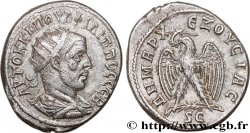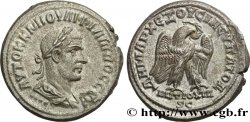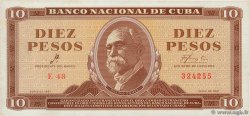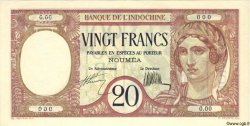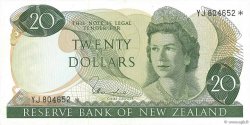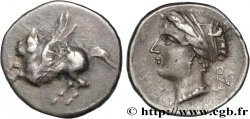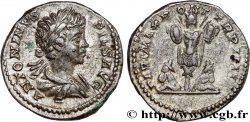Usted debe firmar y ser un comprador aprobado para pujar, Inicia sesión para pujar. Las cuentas están sujetas a la aprobación y el proceso de aprobación se alcanzan dentro de las 48 horas. No espere hasta el día en una venta se cierra el registro.Al hacer una oferta en este artículo usted está firmando un contrato jurídicamente vinculante para comprar este artículo y haga clic en «oferta» constituye una aceptación de los términos de uso de e-auctions de cgb.fr.
La subasta debe ser colocado en euros enteros cantidades venta only.The se cerrará en el momento en la descripción del artículo, no se ejecutarán las ofertas recibidas en el sitio después de la hora de cierre. Veces Transmition pueden variar y las ofertas pueden ser rechazadas si espera a los últimos segundos. Para más información envie el FAQ.
SIN GASTOS PARA LOS COMPRADORES.
SIN GASTOS PARA LOS COMPRADORES.
| Valoración : | 160 € |
| Precio : | 41 € |
| Oferta más alta : | 85 € |
| Fecha de fin de la venta : | 08 junio 2015 16:09:30 |
| participantes : | 6 participantes |
Tipo : Tétradrachme syro-phénicien
Fecha: 244
Nombre del taller / ciudad: Antioche, Syrie, Séleucie et Piérie
Metal: vellón
Diámetro: 28,00 mm
Eje de acuñación: 6 h.
Peso: 12,48 g.
Grado de rareza: R2
Comentarios sobre el estado de conservación:
Minime usure, des restes de brillant de frappe mais un plat de frappe sur l’épaule, dissimulant les ptéryges. La cuirasse à écailles est néanmoins bien visible et l’attribution certaine
N° en los catálogos de referencia :
Pedigrí:
Cet exemplaire est le 0314_015 de la base TSP
Anverso
Descripción del anverso: Buste radié et cuirassé de Philippe Ier à gauche, ptéryges visibles, cuirasse à écailles et épaulette décorée d’une sinusoïde, vu de trois quarts en arrière.
Leyenda del anverso: AUTOK K M IOUL FILIPPOS SEB, (Autokratoros Kaisaros Markos Ioulios Filippos Sebastos)
Traducción del anverso: (L’empereur césar Marc Jules Philippe auguste).
Reverso
Titulatura del reverso: S|C À L’EXERGUE.
Descripción del reverso: Aigle debout à droite, les ailes déployées, tête et queue à gauche, tenant une couronne feuillée dans son bec, posé sur une palme tige à droite.
Leyenda del reverso: DHMARC - EX OUSIAS, (Dhmarcikhs Ex Ousias)
Traducción del reverso: (Revêtu de la puissance tribunitienne / avec l’accord du Sénat).
Comentario
Ce type se distingue par la position de l’aigle ; compte tenu du faible nombre d’exemplaires et de la petitesse du détail, il n’a pas été possible de vérifier si toutes les cuirasses étaient décorées de la même manière, non pointée.
Après les frappes de l’atelier de Rome au MONVRB, les émissions de Philippe sont réorganisées à Antioche, le SC conservé et l’aigle est posé sur une palme. Le point essentiel est qu’elle sera présente jusqu’aux frappes du troisième consulat (il n’y a pas de frappes du deuxième consulat) puis reviendra pour toutes les émissions de Trajan Dèce avant de disparaître définitivement avec les frappes de Trébonien Galle et la fin des émissions de tétradrachmes.
La palme est un attribut monétaire récurrent à Antioche, soit dans le champ, soit sous les pattes de l’aigle du revers. A-t-elle toujours la même signification ? Impossible de le savoir. Théoriquement, la palme est le corollaire d’une onction, d’une fête, une décoration religieuse largement utilisée (voir la scène de l’arrivée du Christ à Jérusalem), et probablement, comme l’aigle, un symbole religieux œcuménique, destiné à être compris et accepté par tous les habitants de la région.
Le retour du SC, disparu des revers entre 242 et 244, après avoir remplacé à Antioche le Delta Eta apparu en 215, et jamais vu dans un autre atelier officiel, est confirmé. Si nous suivons la logique développée pour ces émissions, il faut croire que ces frappes de Philippe ont reçu l’assentiment (au moins) et le financement (au plus) du sénat d’Antioche. Une gigantesque rançon ayant été payée aux Perses pour abréger la guerre, le propre frère de Philippe étant gouverneur de Syrie, sa propre famille en étant originaire, on peut au moins penser que le Sénat regagna de son importance de l’époque des Sévères. La réputation de Priscus étant de pressurer la population - au point de susciter l’usurpateur Jotapian - on peut aussi penser que le produit de ces spoliations servit à frapper des tétradrachmes au portrait et donc à la gloire de l’Empereur.
On note que les sigma sont gravés en C.
Dans la base TSP maintenue par Michel Prieur, quinze exemplaires sont maintenant répertoriés pour ce type. Les seuls musées à disposer d’un exemplaire sont Berlin, Gaziantep et l’ANS.
This type is distinguished by the position of the eagle; given the small number of examples and the smallness of the detail, it was not possible to verify whether all the breastplates were decorated in the same way, not pointed.
After the strikes of the Rome workshop at MONVRB, the Philip issues were reorganized in Antioch, the SC retained and the eagle placed on a palm branch. The essential point is that it will be present until the strikes of the third consulate (there are no strikes of the second consulate) then will return for all the issues of Trajan Decius before disappearing definitively with the strikes of Trebonianus Gallus and the end of the issues of tetradrachms.
The palm is a recurring monetary attribute in Antioch, either in the field or under the paws of the eagle on the reverse. Does it still have the same meaning? It's impossible to know.. Theoretically, the palm is the corollary of an anointing, a feast, a widely used religious decoration (see the scene of Christ's arrival in Jerusalem), and probably, like the eagle, an ecumenical religious symbol, intended to be understood and accepted by all the inhabitants of the region..
The return of the SC, which disappeared from the reverses between 242 and 244, after having replaced in Antioch the Delta Eta which appeared in 215, and never seen in another official workshop, is confirmed. If we follow the logic developed for these emissions, we must believe that these strikes of Philip received the assent (at least) and the financing (at most) of the senate of Antioch. A gigantic ransom having been paid to the Persians to shorten the war, Philip's own brother being governor of Syria, his own family being from there, one can at least think that the Senate regained its importance of the time of the Severans. Priscus's reputation for squeezing the population - to the point of giving rise to the usurper Jotapian - we can also think that the product of these spoliations was used to strike tetradrachms with the portrait and therefore to the glory of the Emperor..
Note that the sigmas are engraved in C.
In the TSP database maintained by Michel Prieur, fifteen examples are now listed for this type. The only museums with a example are Berlin, Gaziantep and the ANS
Après les frappes de l’atelier de Rome au MONVRB, les émissions de Philippe sont réorganisées à Antioche, le SC conservé et l’aigle est posé sur une palme. Le point essentiel est qu’elle sera présente jusqu’aux frappes du troisième consulat (il n’y a pas de frappes du deuxième consulat) puis reviendra pour toutes les émissions de Trajan Dèce avant de disparaître définitivement avec les frappes de Trébonien Galle et la fin des émissions de tétradrachmes.
La palme est un attribut monétaire récurrent à Antioche, soit dans le champ, soit sous les pattes de l’aigle du revers. A-t-elle toujours la même signification ? Impossible de le savoir. Théoriquement, la palme est le corollaire d’une onction, d’une fête, une décoration religieuse largement utilisée (voir la scène de l’arrivée du Christ à Jérusalem), et probablement, comme l’aigle, un symbole religieux œcuménique, destiné à être compris et accepté par tous les habitants de la région.
Le retour du SC, disparu des revers entre 242 et 244, après avoir remplacé à Antioche le Delta Eta apparu en 215, et jamais vu dans un autre atelier officiel, est confirmé. Si nous suivons la logique développée pour ces émissions, il faut croire que ces frappes de Philippe ont reçu l’assentiment (au moins) et le financement (au plus) du sénat d’Antioche. Une gigantesque rançon ayant été payée aux Perses pour abréger la guerre, le propre frère de Philippe étant gouverneur de Syrie, sa propre famille en étant originaire, on peut au moins penser que le Sénat regagna de son importance de l’époque des Sévères. La réputation de Priscus étant de pressurer la population - au point de susciter l’usurpateur Jotapian - on peut aussi penser que le produit de ces spoliations servit à frapper des tétradrachmes au portrait et donc à la gloire de l’Empereur.
On note que les sigma sont gravés en C.
Dans la base TSP maintenue par Michel Prieur, quinze exemplaires sont maintenant répertoriés pour ce type. Les seuls musées à disposer d’un exemplaire sont Berlin, Gaziantep et l’ANS.
This type is distinguished by the position of the eagle; given the small number of examples and the smallness of the detail, it was not possible to verify whether all the breastplates were decorated in the same way, not pointed.
After the strikes of the Rome workshop at MONVRB, the Philip issues were reorganized in Antioch, the SC retained and the eagle placed on a palm branch. The essential point is that it will be present until the strikes of the third consulate (there are no strikes of the second consulate) then will return for all the issues of Trajan Decius before disappearing definitively with the strikes of Trebonianus Gallus and the end of the issues of tetradrachms.
The palm is a recurring monetary attribute in Antioch, either in the field or under the paws of the eagle on the reverse. Does it still have the same meaning? It's impossible to know.. Theoretically, the palm is the corollary of an anointing, a feast, a widely used religious decoration (see the scene of Christ's arrival in Jerusalem), and probably, like the eagle, an ecumenical religious symbol, intended to be understood and accepted by all the inhabitants of the region..
The return of the SC, which disappeared from the reverses between 242 and 244, after having replaced in Antioch the Delta Eta which appeared in 215, and never seen in another official workshop, is confirmed. If we follow the logic developed for these emissions, we must believe that these strikes of Philip received the assent (at least) and the financing (at most) of the senate of Antioch. A gigantic ransom having been paid to the Persians to shorten the war, Philip's own brother being governor of Syria, his own family being from there, one can at least think that the Senate regained its importance of the time of the Severans. Priscus's reputation for squeezing the population - to the point of giving rise to the usurper Jotapian - we can also think that the product of these spoliations was used to strike tetradrachms with the portrait and therefore to the glory of the Emperor..
Note that the sigmas are engraved in C.
In the TSP database maintained by Michel Prieur, fifteen examples are now listed for this type. The only museums with a example are Berlin, Gaziantep and the ANS








 Informar de un error
Informar de un error Imprimir la página
Imprimir la página Comparte mi selección
Comparte mi selección Haz una pregunta
Haz una pregunta Consignar / vender
Consignar / vender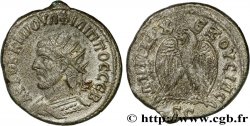
 Descriptivo
Descriptivo
